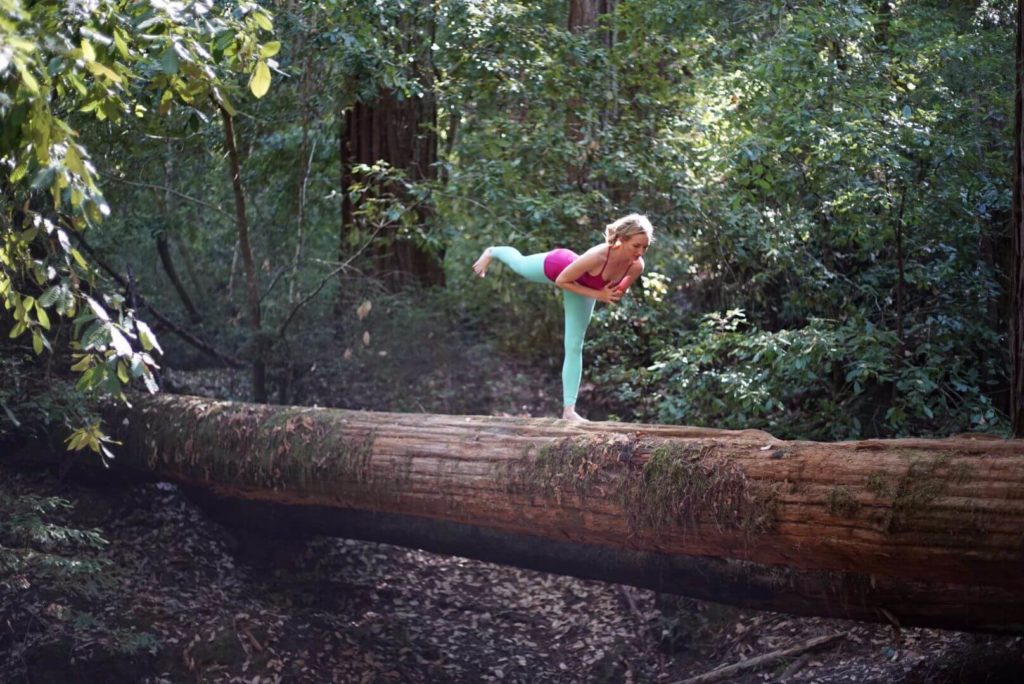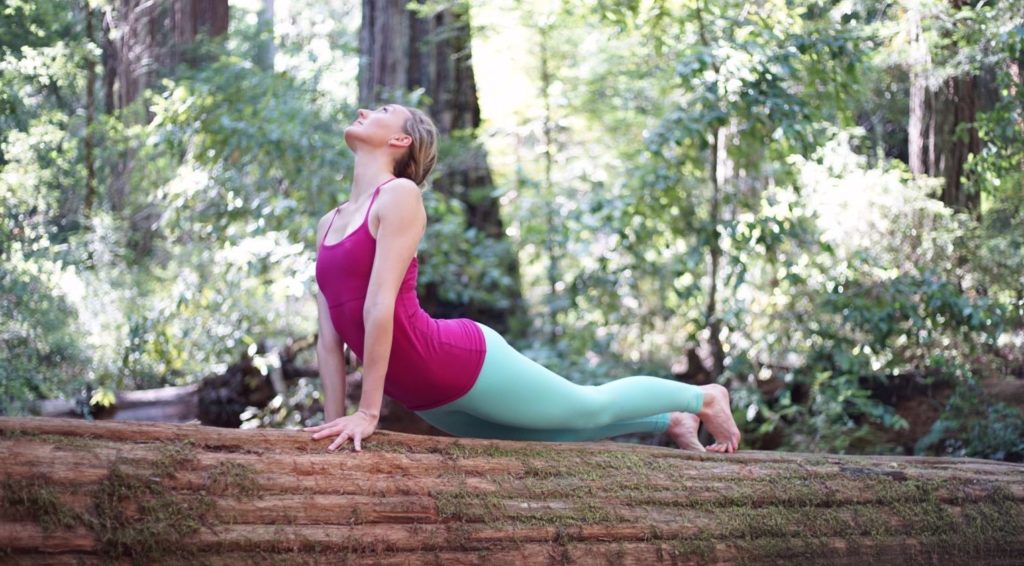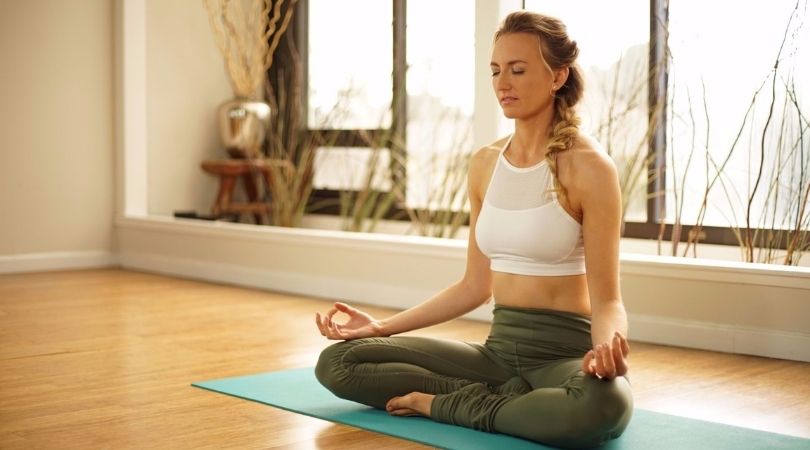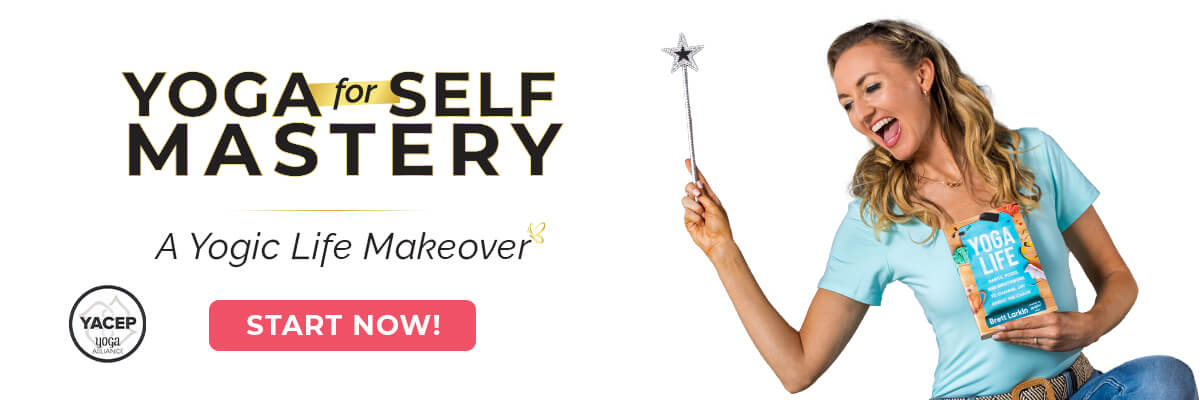
If you practice yoga daily, or even on a regular basis, does that really make you a yogi? Do you require to pass a test or attend a course to “qualify” as one?
Doing yoga is not just about meditation or holding poses; there is so much more to it.
If you trace the roots of yoga back to 5000 years, you will find out that traditionally, yoga was not even about poses or breath control—it was a way of life.
The term ‘yoga’ in Sanskrit can be interpreted as ‘oneness’. The original philosophy of yoga revolves around the oneness of the mind, body, and spirit, which paves the path to every yogi’s ultimate goal—divine union.
To embrace and practice yoga in all its holistic glory, it is necessary that you first figure out the answer to the question, “What is a yogi?”. This article will be delving deep into the various nuances of who a yogi is, or should be. Keep an open mind (and heart) as you read on, and brace yourself for some eye-opening revelations.
The Traditional Definitions of a Yogi

If you search for the meaning of the word “yogi” in the dictionary or on the internet, the most straightforward answer you would come across is, “A practitioner of yoga”.
But given the enormity of yoga, this definition barely scratches the surface of who a yogi is. Let’s take a look at some of the popular traditional definitions out there, attributed to yogis:
- Bhagavat Gita: In Bhagavad Gita (ancient Hindu scripture), Chapter II, Verse 48, Lord Krishna tells prince Arjun the following words in Sanskrit, “Hey Dhananjaya (another name of Arjun)! Fulfill your duties without being attached to success or failure. This supreme form of action that is both balanced and tranquil is known as Yoga.” In this context, a yogi is a person who is not driven by motive or achievements and is free of ego.
- Sadhguru: According to Sadhguru, a yogi is someone who focuses on the purpose of yoga rather than its consequences. He reflects upon how it’s an arduous task to make people see yoga as a lifestyle instead of just an “ancient form of exercise”. When doing yoga, many tend to focus on their muscles while they really should be mindful of being in sync with the energy that flows through their body. This is what distinguishes yogis from people who mechanically practice yoga poses.
- Paramhansa Yogananda: Paramhansa Yogananda is of the opinion that a yogi engages in disciplining their mind and body one step at a time, thereby liberating their soul in the process. His understanding of a true yogi is someone who never takes emotions or faith for granted; instead, they practice a set of thoroughly-tested yoga sequences mapped out by ancient gurus and sages.
- Swami Kriyananda: Swami Kriyananda differentiates yogis from average people by the ability of the former to accept the equanimity of whatever is around them. A true yogi is aware that everyone and everything in the universe is just an illusion—a play of the divine light and darkness—and reacts appropriately.
The 8 Qualities of a Yogi

Being a true yogi is all about gaining mastery over the self through physical, mental, and spiritual purification. In order to do this, you must get familiar with the eight limbs of yoga. About 2500 years ago, a sage named Patanjali compiled a book titled “Yoga Sutras of Patanjali” to introduce the world to the practice of Ashtanga Yoga. In Sanskrit, the word “Asht” means “eight” and “anga” refers to “limbs”.
Ashtanga yoga is one of the most popular and crucial styles of yoga—mastering it is imperative for Yoga Teacher Training. The purpose of these eight practices is to help you achieve self-realization by breaking free from the chains of mental and physical suffering.
Each one of these eight limbs represents qualities that will facilitate personal development and would gradually shape you into a true yogi. Let’s take a quick look at each of them:
1. Yamas
Yamas are the guidelines you must follow in order to relate to the world better. Ashtanga yoga lists out 5 Yamas:
- Ahimsa (Non-Violence): Never hurt yourself or others. This is not limited to obvious physical or mental violence—you should refrain from anything that could be toxic to yourself or those around you, including anger, jealousy, gossiping, and unkind words.
- Satya (Truth): Live honestly and truthfully. Shape a clear and unbiased view of yourself and the world around you. Never be blinded by worldly illusions.
- Asteya (Non-Stealing): Never pursue or acquire anything that does not belong to you. This could mean tangible or intangible entities including money, possessions, emotions, or time.
- Brahmacharya (Abstinence): Limit yourself from indulging in sensory pleasures. Don’t let your senses control your actions or thoughts.
- Aparigraha (Detachment): Focus on what you need, not what you want. Never get too attached to anything or anyone around you—understand that your body is temporary, but your soul is permanent.
2. Niyamas
While the Yamas guide you on how to interact with the world, the Niyamas focus on how you connect with your innermost self. Here are the 5 Niyamas every yogi should master.
- Saucha (Cleanliness): Keep your body clean and fit by focusing on hygiene. Practice self-care, groom yourself, and exercise every day. You should also take care of your mental and spiritual health with positive mantras, meditation, and mindfulness. Saucha shouldn’t just limit to yourself, it should also expand to your home and community.
- Santosha (Contentment): Develop the habit of practicing gratitude. Start appreciating what you have and who you are. Find joy in the little pockets of happiness in life.
- Tapas (Self-Discipline): Make use of self-discipline to steer through negative thoughts and habits. Once you learn to control your senses and desires, you can focus on pursuing your goals and evolving alongside.
- Svadhyaya (Self-Study): Start asking yourself challenging questions like, “Who am I?” or “What is my purpose in life?”. This will help identify and shape your core identity.
- Ishvara Pranidhana (Connection with Divinity): Surrender your ego to the limitlessness of the supreme. Come to terms with the real meaning of life and how you are just a tiny part of an enormous universe.
3. Asanas (Yoga Poses)
The third limb may be what most people are familiar with currently—asanas or poses. The reason why asanas come after Yamas and Niyamas is that Patanjali wanted yogis to equip their mind and body for physically practicing yoga.
4. Pranayama (Enhancement of Life Force)
The Sanskrit term “Pranayama” can be literally translated to “life energy regulation”. Your prana or “life force” is responsible for all the activities you do like walking, talking, thinking, and so on. Pranayama exercises are used as a means to enhance the chakras and energy meridians in your body and will help bring harmony between the right and left hemispheres of your brain.
5. Pratyahara (Restriction of the Senses)
By practicing Pratyahara, you learn to shield your senses from outside stimulation. The five sensory organs are always on the verge of getting triggered by any stimuli that come their way. It is essential for you to learn how to calm your senses, so as to focus better and gain control over your thoughts.
6. Dharna (Concentration)
Once you learn how to restrict your senses, the next step is to focus all of them on a single object or a point. The purpose of dharna is to enable yourself to control your mind, which is key for meditation.
7. Dhyana (Meditation)
This brings us to Dhyana or meditation, the seventh limb of yoga. You should be able to look deep within and form a connection with your innermost self without any interruptions from your thoughts or senses.
8. Samadhi (A Deep State of Awareness)
Through meditation, you will reach samadhi or self-realization, the final limb of yoga. Once you learn to control your body and senses, you will be able to enter a deep state of meditation—a window to pure bliss and a higher level of self-awareness. Samadhi is the ultimate goal of a yogi, where they will discover the truths about themselves and the universe.
The 7 Yogic Stages of Jnana

Now that you are familiar with the qualities a yogi should acquire, let’s move on to the seven stages or bhumikas of jnana (knowledge) you should embrace to understand and practice yoga in its entirety. While the eight limbs focus on the actions that should be taken to reach the pinnacle of yoga, the seven bhumikas describe the states of awareness a yogi has to go through to reach self-realization.
1. Subecha (The Desire for Good)
The first stage is known as ‘Subecha’ or the desire for good. This stage of awareness can be divided into four:
- Viveka (The Ability to Discriminate): This stage is achieved when you are able to discriminate or differentiate between the real and the unreal, and permanent and temporary.
- Vairagya (Dispassion for the unreal): Once you attain Viveka, the instinct to pursue what your heart desires and amass worldly possessions diminishes, which in turn enables you to sever ties with objects, people, or the community.
- Shatsampat (Mastery of the six senses): The next step is to master all the six senses—sight, sound, smell, taste, touch, and intuition—without indulging them. Once you reach this level, you will be able to remain indifferent to the stimulation around you, no matter what the situation is.
- Mumukshutava (Deep desire for liberation): Once the first three levels are attained, you will start to see that the life you are leading now is filled with pain and misery and would want to get ‘moksha’ or liberation from the vicious circle of life and death.
2. Vicharana (Enquiry, Investigation)
After subecha, the next level of knowledge is vicharana or inquiry. At this stage, you start investigating yourself based on the truth you know. You go over the wrongs you have done in the past and make a conscious decision to right them by surrendering yourself to the power of the divine.
3. Tanumanasi (Thread-like mind)
Next comes Tanumanasi, where your mind gets transformed by the insight you have gained through meditation and self-reflection. You start to lose interest in worldly pleasures and focus solely on selfless spirituality. When you do this, your mind becomes thin like thread, hence the name.
4. Sattvapati (Attaining Purity)
Once your mind becomes like a thread, the next step is purity. The lower qualities in your mind like tamas (dullness) and rajas (passion) transcend to awareness and sattva (purity). When your mind is pure, it becomes akin to the still waters of a lake, having moved away from everything you used to know or love.
5. Asamshakti (Worldly Apathy)
This is the stage where you will completely detach yourself from the world. Day by day, you get less affected by the external circumstances and start experiencing the love and bliss within yourself.
6. Padartha-bhavan (Continuous Self-awareness)
At this stage, you will let go of all conceptions related to the internal as well as the external, and continuously immerse in the Absolute Self, engaging in actions only when driven by others.
7. Turiya (Liberation)
In the final stage, you will begin to look at the world and the absolute self as one. Turiya refers to the liberation from anything that stops you from becoming one with the divine; it is the state of superconsciousness.
How to Become a Yogi
Becoming a yogi is not something that can be taught, but you can learn it with the right guidance and lifestyle changes. Here are some simple tips to make the transformation from a mere practitioner of yoga to a true yogi.
- Practice, Practice, Practice: I always say that practice makes the yogi perfect. Integrate a yoga routine into your life and try to follow it as often as possible. Make sure the routine includes at least 15 minutes of meditation. If you’re drawn to the prospect of teaching someday, dedicating yourself to practice is an ongoing commitment involved in becoming a yoga teacher.
- Find a Good Guru: You may think following an online tutorial is all that you require, but it is recommended that you practice under a certified yoga teacher. This will not only render depth and direction to your training but will also prevent any mishaps that could happen while attempting to master yoga on your own.
- Do Your Homework: When it comes to yoga, “being” and “understanding” are more important than “doing”. Do your research; read literature related to yoga; it can be anything—books, pamphlets, articles—as long as they are from credible sources. Grasping the theory of who a yogi is will simplify the task when you try to live it.
- Commit to Strengthen Your Practice: Practicing yoga twice or thrice a week by resonating with yourself is much more powerful than practicing it mechanically 3 times a day. What matters is not the length of your practice or the number of times you do it, but the depth of your concentration, self-awareness, and understanding of the philosophies related to yoga.
- Live by the Yamas and Niyamas: The purpose of the Yamas and Niyamas is to help you make ethical choices. Embrace them, make positive lifestyle choices that will help align your body, mind, and spirit to inner peace, contentment, and balance.
Conclusion
The journey from practicing yoga as an exercise to transforming it into a lifestyle may not be an easy one. It depends on how you perceive the truths of yoga and what you choose to incorporate into your life. It might take just a few weeks or a few decades, or even a few lifetimes—it’s all up to you.
You can either lead a life filled with worldly possessions, worrying about having to leave everything behind someday, or you can transcend beyond your physicality and live in bliss. Free yourself from the compulsiveness of your body and focus on your soul. That is the ultimate and only secret of living life to the fullest.
A secret every yogi ultimately discovers.
Next Steps
- If you’re interested in practical kriya yoga as a way to improve your daily life and relationships, check out my Yoga for Self Mastery course.
- Order my Yoga Life book for a practical guide to creating balance in your life through yoga.
- Check out my YouTube channel and find some yoga classes that you can try out for yourself!
Experience 3 Training Videos from Inside My 200-Hour Online YTT

YOU MIGHT ALSO LIKE
- What is Kriya Yoga? The Philosophy and Practice
- Uddiyana Bandha: Tapping Into Your Deep Core
- 4 Reasons Hasta Bandha Is Essential To Your Yoga Practice
- Vitarka Mudra: What It Is and How Do You Use It?
- Shakti Mudra: What It Is and How Do You Do It?
- Garuda Mudra: What It Is and How Do You Use It?
- Kali Mudra: What It Is and How Do You Do It?
- Shunya Mudra: What It Is and How Do You Do It?
- Varuna Mudra: What It Is and How Do You Use It?
- Vayu Mudra: What It Is and How Do You Use It?
- Samana Vayu: The Energy of Balance & How to Access It
- Apana Vayu: The Energy of Release & Surrender
- Udana Vayu: The Ascending Wind
- Prana Vayu: The Breath of Vitality
- Vyana Vayu: The Energetic Secret to Flow
Experience 3 Training Videos from Inside My 200-Hour Online YTT

YOU MIGHT ALSO LIKE
- What is Kriya Yoga? The Philosophy and Practice
- Uddiyana Bandha: Tapping Into Your Deep Core
- 4 Reasons Hasta Bandha Is Essential To Your Yoga Practice
- Vitarka Mudra: What It Is and How Do You Use It?
- Shakti Mudra: What It Is and How Do You Do It?
- Garuda Mudra: What It Is and How Do You Use It?
- Kali Mudra: What It Is and How Do You Do It?
- Shunya Mudra: What It Is and How Do You Do It?
- Varuna Mudra: What It Is and How Do You Use It?
- Vayu Mudra: What It Is and How Do You Use It?
- Samana Vayu: The Energy of Balance & How to Access It
- Apana Vayu: The Energy of Release & Surrender
- Udana Vayu: The Ascending Wind
- Prana Vayu: The Breath of Vitality
- Vyana Vayu: The Energetic Secret to Flow
Learn how to do 11 of the most popular yoga poses correctly. Free video + PDF download.














